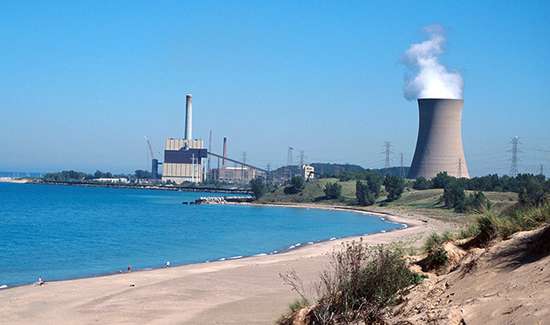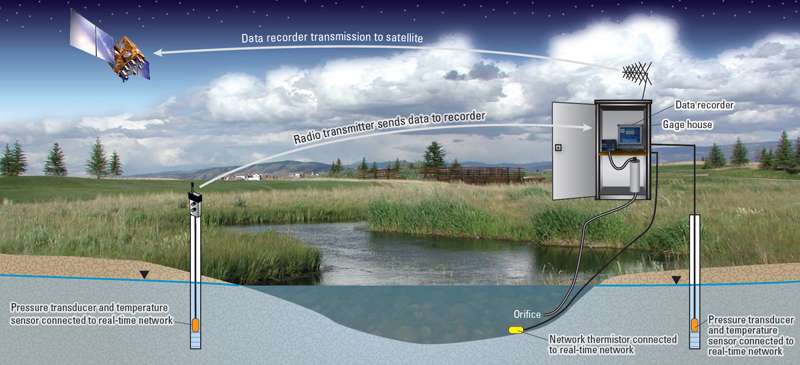A new way to understand stream temperature in an integrated Earth-human system

As a bellwether for water quality, stream temperature is regulated to protect aquatic ecosystems. Scientists at Pacific Northwest National Laboratory developed a new modeling tool to understand stream temperature, with their sights on how it may be influenced by climate change and human activities.
Applying the new module in a river transport model and coupling it with a generic water management model within an Earth system model framework, they were able to closely mimic the observed stream temperature variations from over 320 river gages across the contiguous United States.
Their additional analysis focused on reservoir operations which they found could cool down stream temperature in the summer low-flow season, from August to October, by as much as 1 to ~2oC by altering the timing of streamflow that boosts summer water flows.
"Our new capability lays a solid foundation for future studies on the water-energy-land nexus," said Dr. Hong-Yi Li, a PNNL hydrologist who led the study. "It opens exciting opportunities to evaluate our options for managing resources in an evolving environment."
In the United States, 90 percent of electrical power comes from generating electricity using heat-conversion (thermoelectric) systems, fueled by coal, gas, oil, and nuclear generators. Withdrawing as much water as farms, these power plants require fresh water to generate steam and for cooling purposes.

Because of the sensitivity of stream life, regulations are in place-especially for the protection of fish-on the temperature of water discharged from power plants. In turn, this means that stream temperature is an important limitation on energy production. Such a constraint is particularly critical during low water flows and drought conditions, which are projected to be more widespread and prolonged in a warmer climate.
Researchers increasingly use Earth system models to understand climate change impacts. Adding a stream temperature module can provide important information to evaluate potential changes in river temperature. This information is extremely valuable because stream temperature can impact thermoelectric power production that uses wet-cooling systems. The water's eventual release back into the stream system can put aquatic and coastal ecosystems in jeopardy.
PNNL researchers developed a new large-scale stream temperature model within the Community Earth System Model (CESM) framework. The model was coupled with the MOdel for Scale Adaptive River Transport (MOSART) that represents river routing, and a water management model. The coupled models allowed reservoir operations and withdrawal impacts on stream temperature to be explicitly represented in a physically based and consistent way. The models were applied to the contiguous United States driven by the observed meteorological forcing.
The team evaluated model-simulated streamflow and stream temperature against the observations at over 320 U.S. Geological Survey (USGS) river gages in the United States. They showed that including water management in the models improves the agreement between the simulated and observed streamflow and stream temperature at a large number of stream gauge stations. The space and time variation of stream temperature was systematically analyzed at regional to national scales.
Through sensitivity experiments, this study revealed the relative influence of climate and water management on both streamflow and stream temperature. Further, it uncovered the notable impacts of reservoir operations on stream temperature during August-September-October when changes in stream temperature have critical effects on water-cooling thermoelectric power production and aquatic ecosystems.
PNNL researchers are now examining the relative contributions of climate change and human activities on stream temperature variations and subsequently on wet-cooling thermoelectric power production in the coming decades. They are also extending MOSART to simulate how sediment, carbon, and other nutrients move from the landscape through the rivers and into the ocean.
More information: Hong-Yi Li et al. Modeling stream temperature in the Anthropocene: An earth system modeling approach, Journal of Advances in Modeling Earth Systems (2015). DOI: 10.1002/2015MS000471
Provided by Pacific Northwest National Laboratory



















